We’re posing this question much earlier than last year, and here’s why.
Despite the very wet Autumn here in the wild and woolly West Country, South West Water still have a “hosepipe ban” in place across Cornwall. The automated rainfall gauge 49104 at Colliford Lake reveals that there has been very little rainfall in the area for the last three weeks:
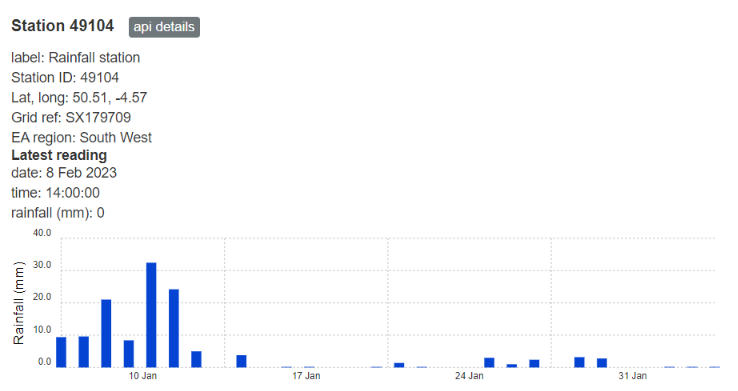
As a consequence of that, the water level in Cornwall’s largest reservoir is now still below 50% and decreasing:
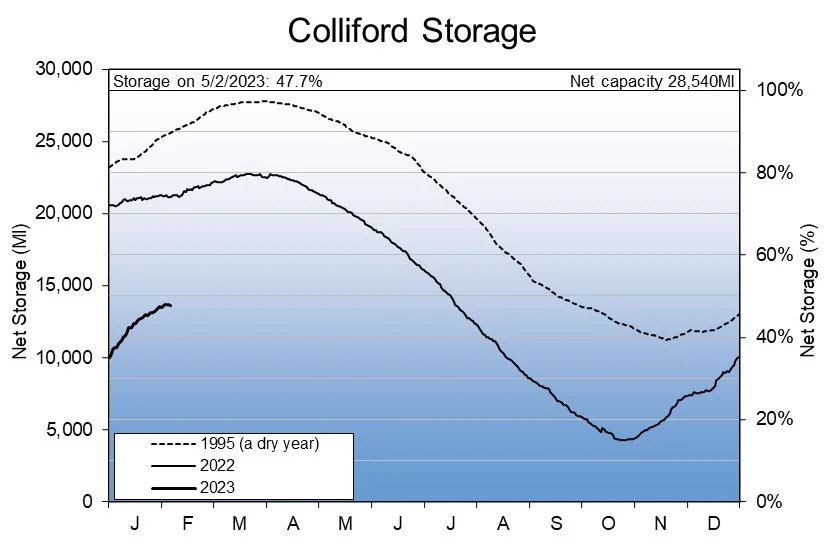
The much smaller Stithians Reservoir is over 90% full, but has also stopped filling up :
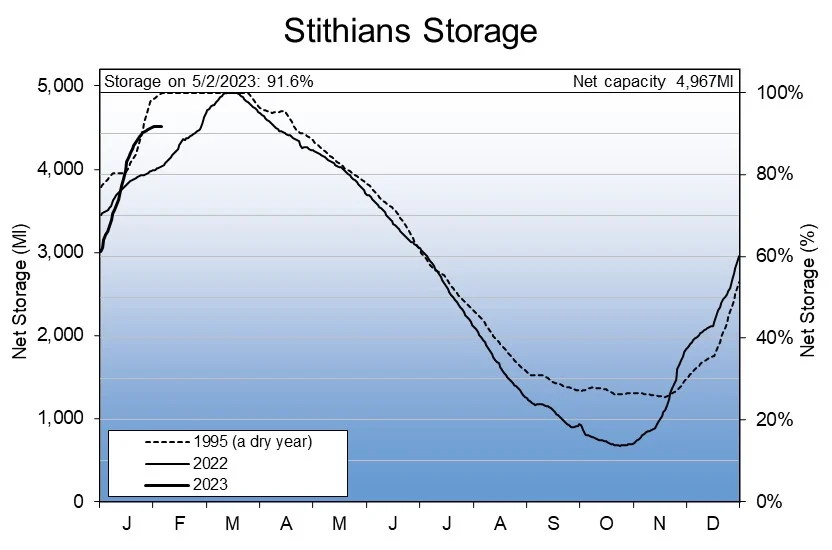
Across the South West Water region as a whole water levels have been flatlining for somewhat longer:
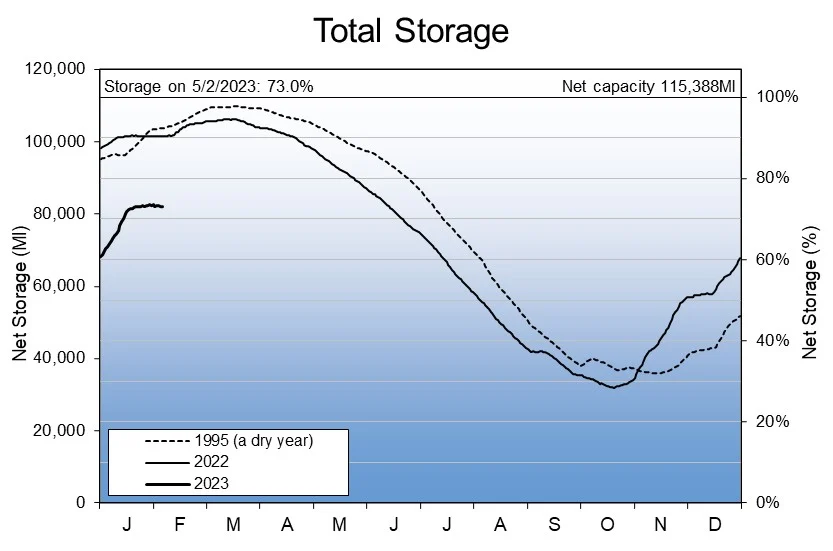
It is of course difficult to predict rainfall over the next few months, but it is certainly eminently feasible that the current Non-Essential Use Ban (NEUB for short) will still be in place when the 2023 summer holiday season begins.
[Edit – February 12th]Even though we’re still in meteorological winter the National Drought Group has had another meeting. His Majesty’s Government reports that:
Following the driest summer in nearly 30 years, experts are warning that another hot dry spell could see drought conditions return in 2023, despite winter rainfall replenishing most water levels.
At today’s meeting of the National Drought Group, chaired by EA Executive Director John Leyland, the group discussed how risks to water resources remain, despite significant improvements following five consecutive months of above average rainfall. Only two of the Environment Agency’s areas – East Anglia and Devon, Cornwall and the Isles of Scilly – now remain in “drought” status, with most now “recovering”…
Members are planning for the worst case scenario of another hot, dry spell this summer and are managing water resources to reduce the risk of drought measures – such as temporary use bans and taking additional water from the environment – being required again this year.
A recent Sentinel 2 satellite image shows Bodmin Moor looking very brown and dry already:

Davidstow Airfield and Crowdy Reservoir are visible at the top left. The much larger Colliford Lake is bottom centre.
[Edit – February 15th]The latest Cornish reservoir water level graphs from South West Water show no improvement:
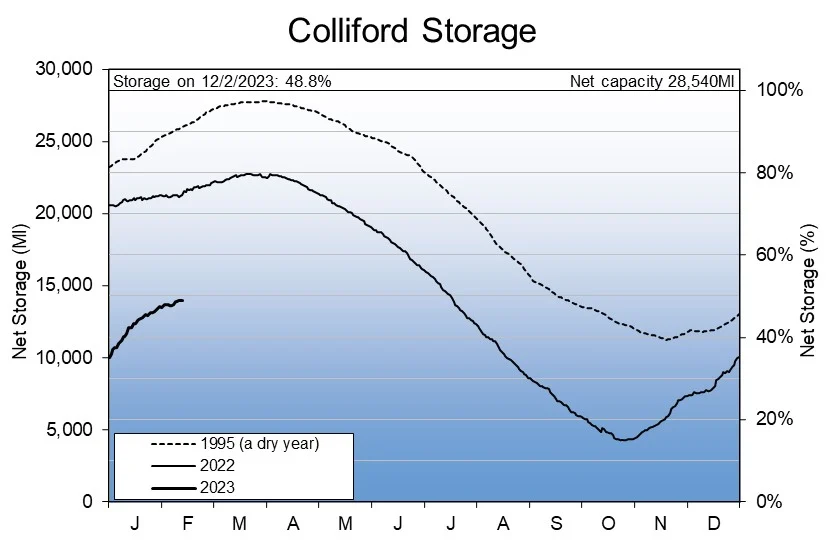

Colliford Lake is still less than 50% full, and the water level in Stithians Reservoir is now declining. However has been a modest amount of rainfall across Cornwall today:
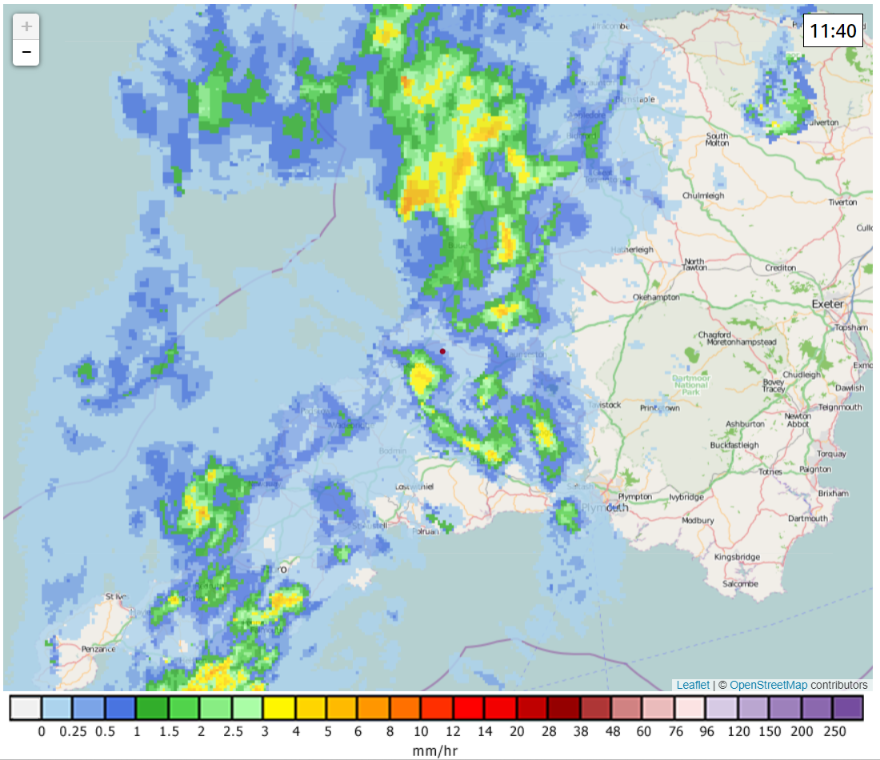
The Environment Agency has published its national water situation report for January 2023. Here a some edited highlights from the summary:
Just under half of the reservoirs or reservoir groups were classed as below normal or lower, with Colliford in the south-west remaining at exceptionally low levels. The Dee reservoirs which supply north-west England are undergoing reservoir safety work, meaning storage is lower than would be expected for the time of year.
At the regional scale, total reservoir stocks ranged from 76% in south-west England to 92% in north-east England. Total reservoir stocks for England were at 88% of total capacity at the end of January.
Early February is dominated by dry weather mixed with sunny spells. The settled conditions will continue, however wetter and windier conditions are forecast to return during towards the end of the month. Temperatures are forecast to be milder than average for February.
For the 3 month period from February to April there is an increased chance of mild conditions. There is an increased likelihood of heavy rain and strong winds during this period. There is also a slight increase in the chance that this period as a whole will be wetter than average.
Let’s all hope that the “increased likelihood of heavy rain” turns into reality across the far west of South West England?
[Edit – February 23rd]Another week’s worth of Cornish reservoir water level data has been published, but there is no improvement. Colliford Lake is still less than 50% full:
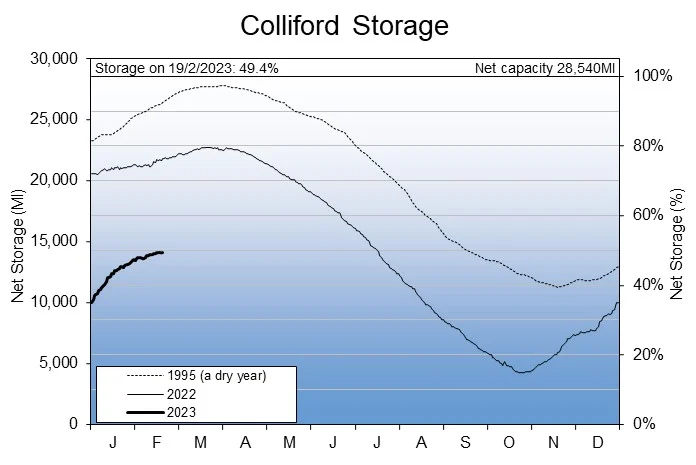
Stithians Reservoir looks a lot healthier, but nonetheless is still flatlining:
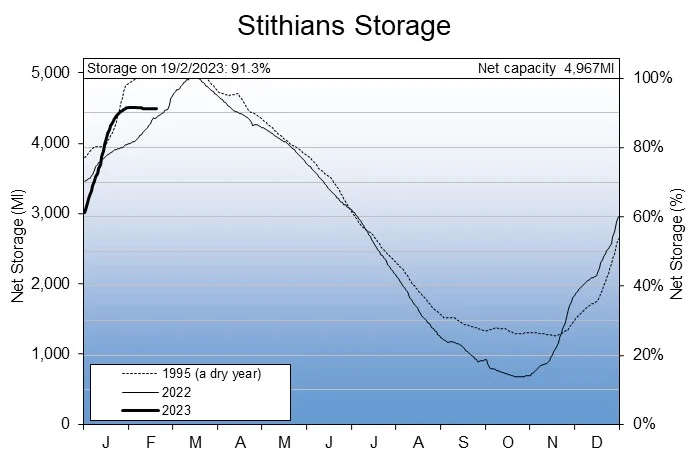
At least our local Crowdy Reservoir is 98% full:
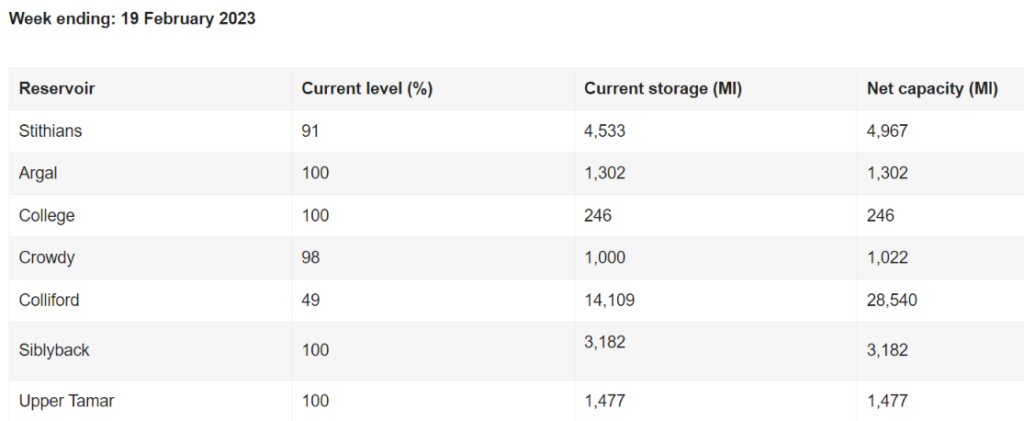

It looked pretty in this evening’s sunset, but unfortunately it only holds a fraction of the water that even a half full Colliford contains.
[Edit – March 1st]According to the Met Office this afternoon:
England had its driest February in 30 years according to provisional figures, as meteorological winter concluded with a dry and mild month for most…
England had its eighth driest February in a series which goes back to 1836, and its driest since 1993, with on average just 15.3mm of rain falling in the month:
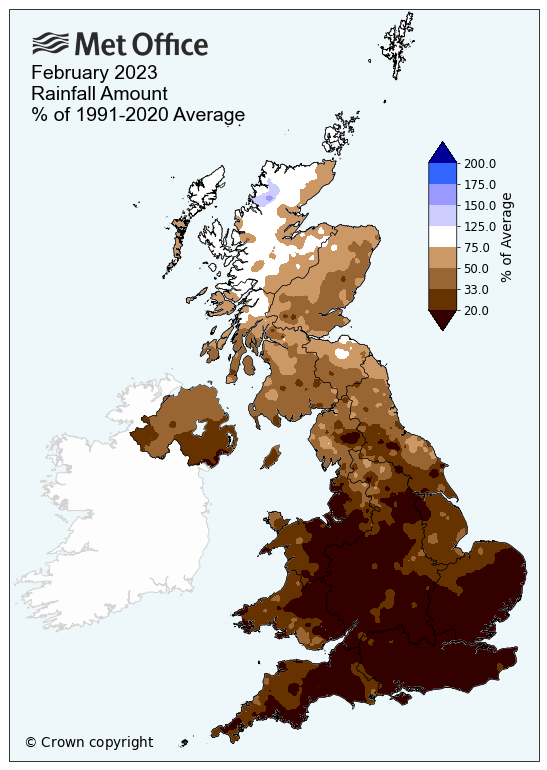
Dr Mark McCarthy of the Met Office’s National Climate Information Centre said: “The second half of January was largely dry and that theme continued through February with high pressure centred over the UK for much of the month, helping to repel advancing fronts and keep low pressure systems away, and resulting in a notable long winter dry spell.
“That high pressure has principally, but not exclusively, been focused around the southern half of the UK, meaning southern England has been particularly dry, with just 9.7mm of rain falling here, which is just 16% of its average.”
Environment Agency Executive Director and National Drought Group chair John Leyland said: “While most water levels have returned to normal across much of the country, low rainfall in recent weeks highlights the importance of remaining vigilant.
“We cannot rely on the weather alone, which is why the Environment Agency, water companies and our partners are taking action to ensure water resources are in the best possible position both for the summer and for future droughts.
“As ever, it is important that we all continue to use water carefully to protect not just our water resources; but our precious environment and the wildlife that depends on it.”
No doubt as a result of all that high pressure, things have been going from bad to worse on the reservoir water level front in Cornwall. Stithians is still flatlining at around 92% of total net capacity:
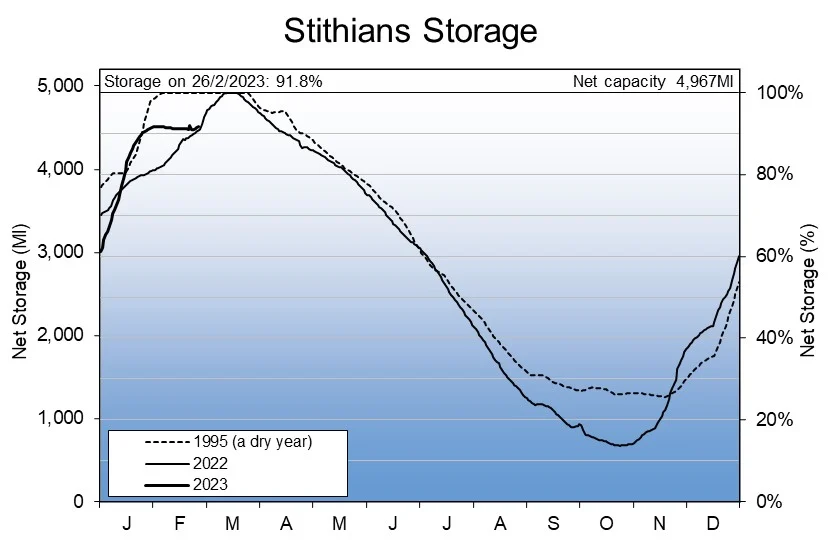
Our on site investigation last weekend suggested that Hawks Tor Reservoir is full to overflowing:

Despite that the water level in by far the largest reservoir in Cornwall, the nearby Colliford Lake, is now declining:

As you can see from the graph above, maximum water level in Colliford isn’t usually reached until April. However achieving last year’s maximum of 80% of capacity now seems impossible. And look at what happened after that!
P.S. Here’s the South West Lakes Trust’s report including water levels for some of the smaller reservoirs in Cornwall:

Drought in Kernow during the summer of 2023 currently looks like an odds on certainty. To me at least.
[Edit – March 2nd]The Environment Agency has just published their weekly rainfall and river flow summary up to Tuesday 28 February 2023. Here’s the graphical overview for England:
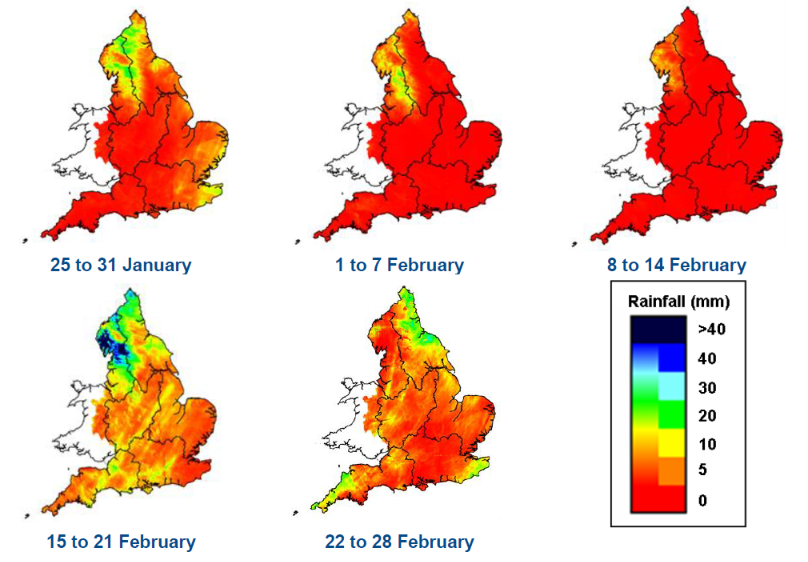
and here’s the regional table:
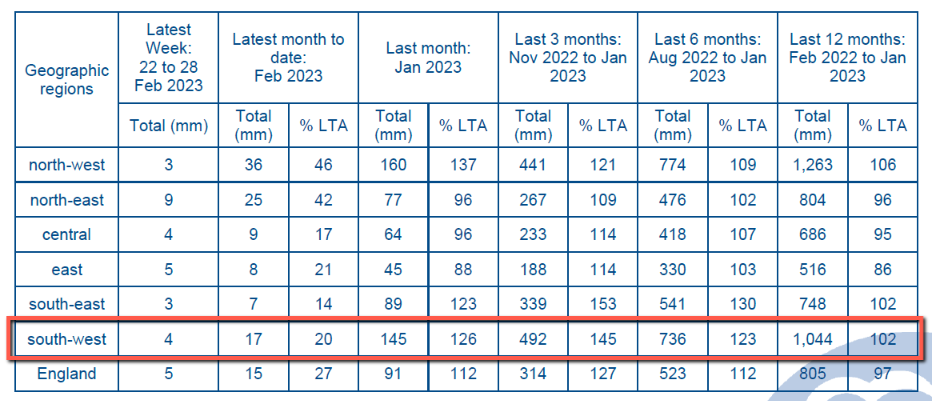
Although rainfall increased somewhat during the second half of February, for the month as a whole the South West received only 20% of the long term average. What’s more the weekly outlook isn’t very hopeful for significant amounts of rain in this part of the country.
According to the European Drought Observatory almost all of Cornwall is already suffering from a “soil moisture deficit” as well as a “rainfall deficit”:
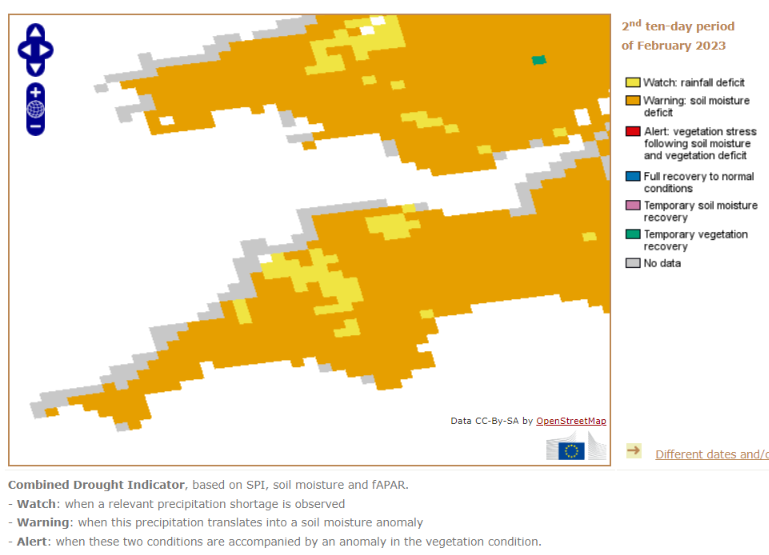
All in all it has to be said that things don’t look hopeful for our drinking water supply this summer.
[Edit – March 8th]You can read all about our trip to Cornwall’s largest reservoir on Monday here. South West Water have just released water level data for the largest reservoirs in Cornwall up to the previous day. On Sunday Colliford Lake had a slight uptick, to leave it with no change over the week:
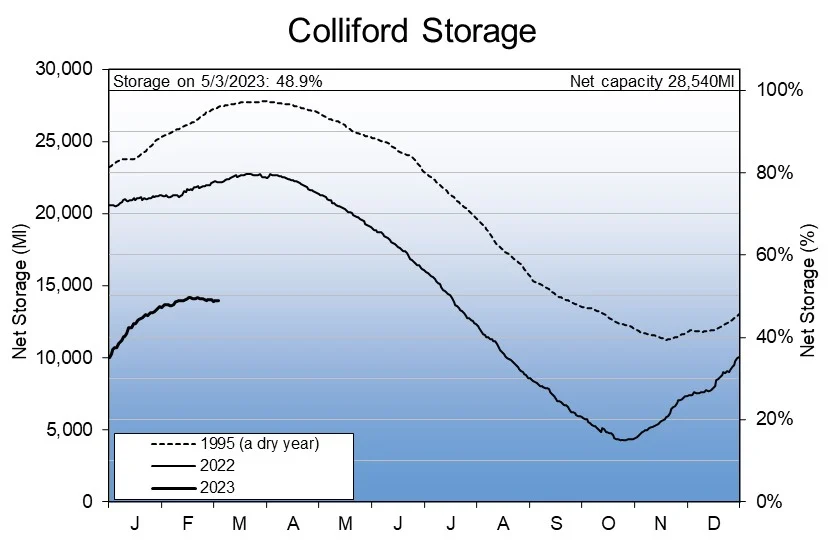
However Stithians has been declining quickly, percentage wise at least, down 2.6% in a week:
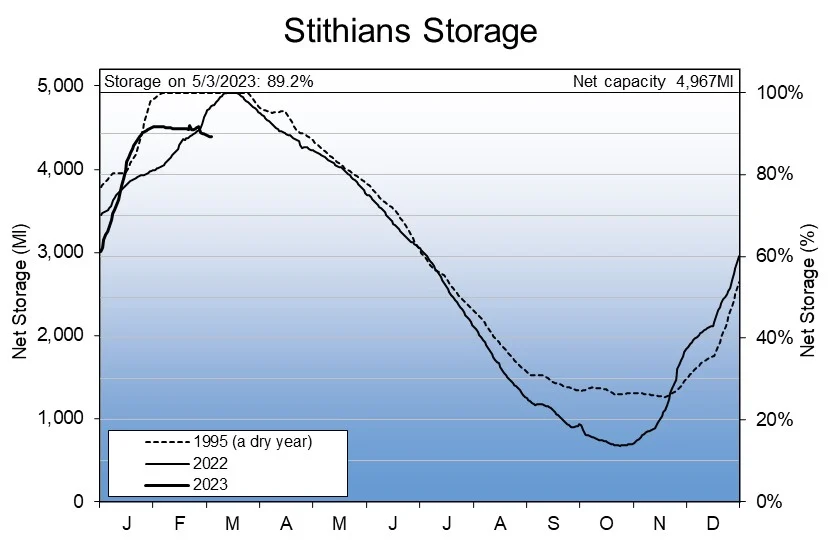
Hopefully the overnight precipitation across Cornwall will improve matters somewhat?
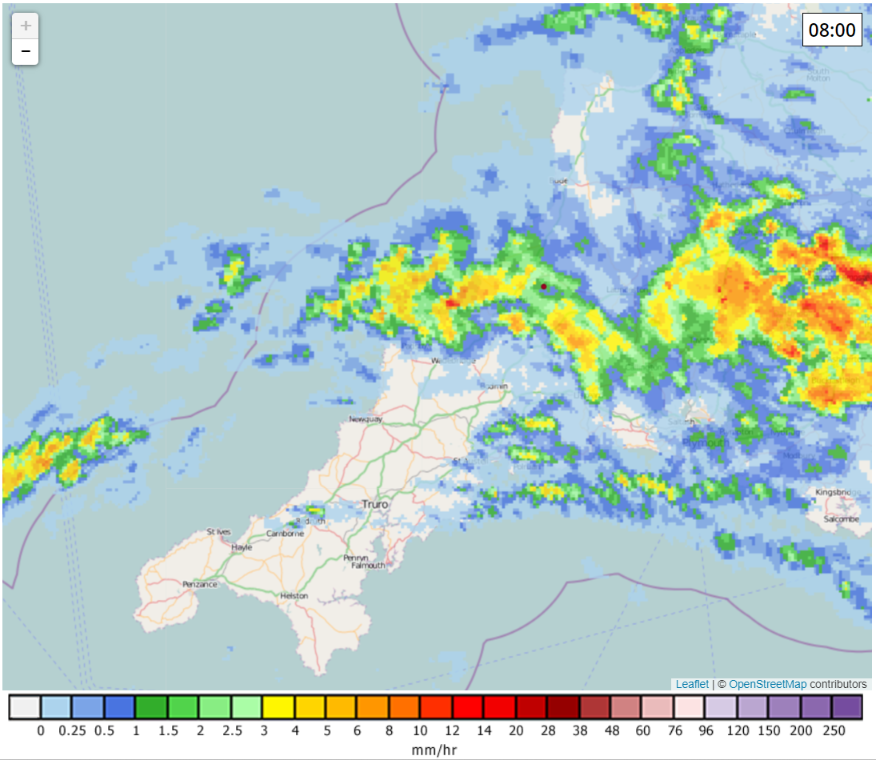
P.S. The South West Lakes Trust updated their water level table on Thursday:
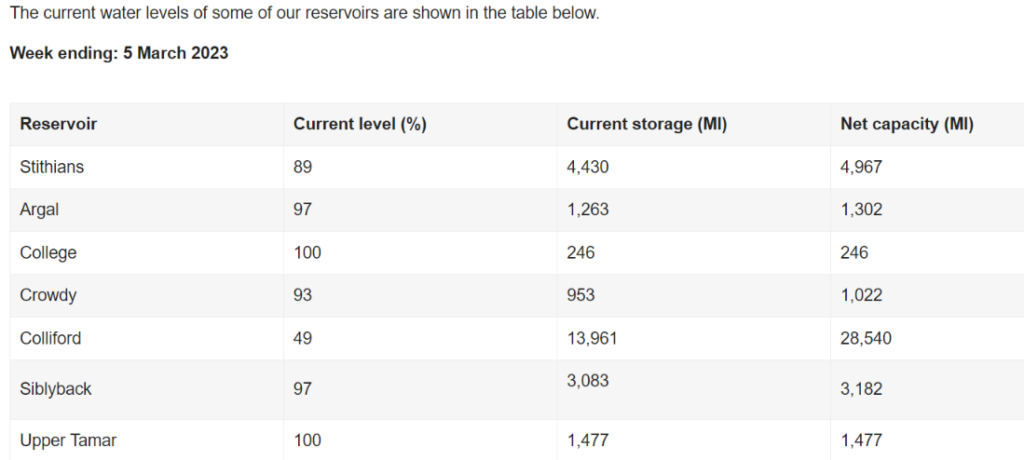
The Environment Agency has published its weekly rainfall and river flow summary for the week ending March 7th:
It has been a wetter week across England as a whole compared to the previous week. Southern England received the most rainfall. Rainfall totals ranged from 4mm in east England to 10mm in south-west England:
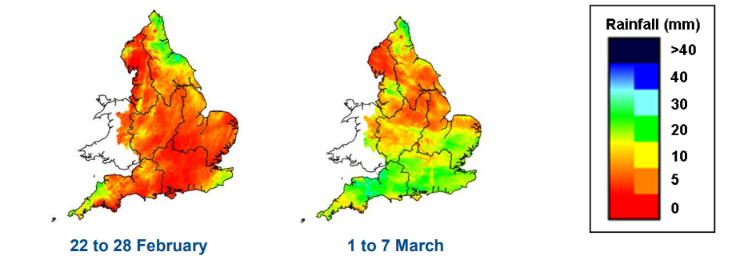
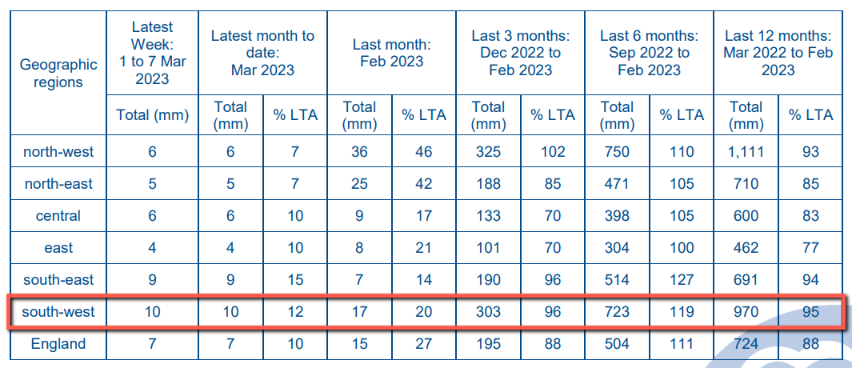
River flows decreased at the vast majority of the sites we report on compared with the previous week. All sites are classed as normal or lower for the time of year. 11% are classed as normal, 34% are classified as below normal, 32% are classed as notably low and 23% are exceptionally low for the time of year.
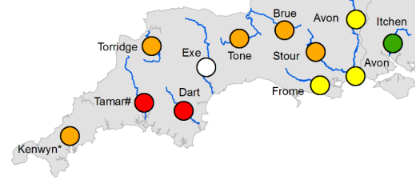
The flow in the River Tamar is still “Exceptionally Low”. Finally, for the moment at least, here is the recent record from the automated rainfall gauge 49104 at Colliford Lake:
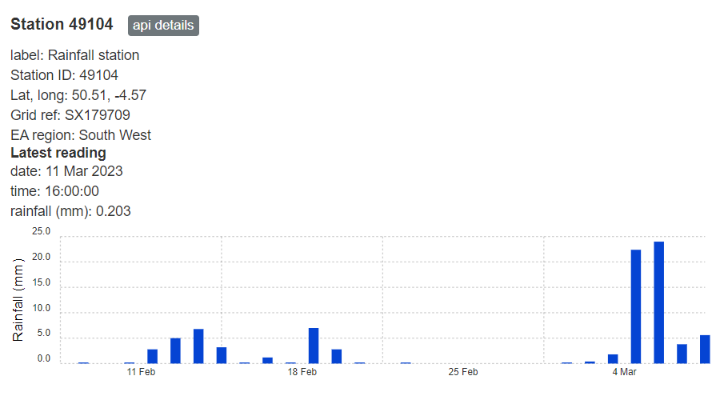
Both the 7th and 8th of March experienced more rainfall in one day than South West England’s average rainfall for the entire month of February.
A tiny morsel of good news at long last!
At long last Colliford Lake is now more than half full! A wet week raised the water level to 51.3 % of total net capacity by Sunday 12th, a gain of 2.4 % over the week:
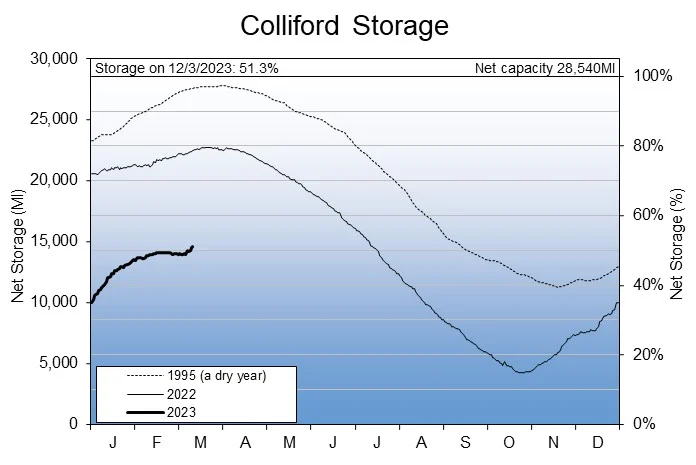
The water level in Stithians Reservoir also increased, but not by enough to erase the previous week’s losses:
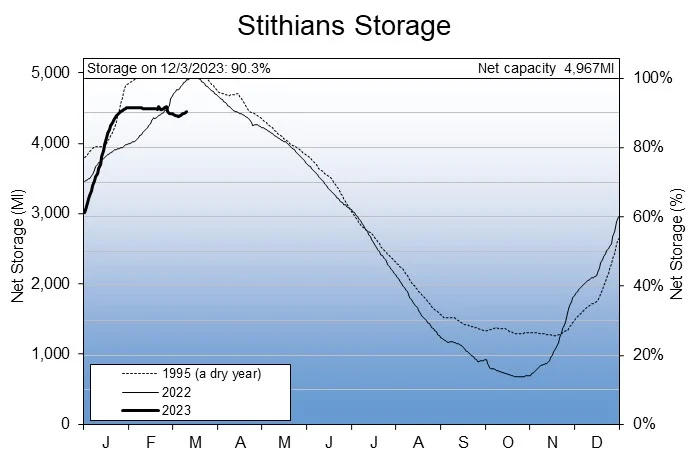
Here’s the South West Lakes Trust’s report including water levels for some of the smaller reservoirs in Cornwall:
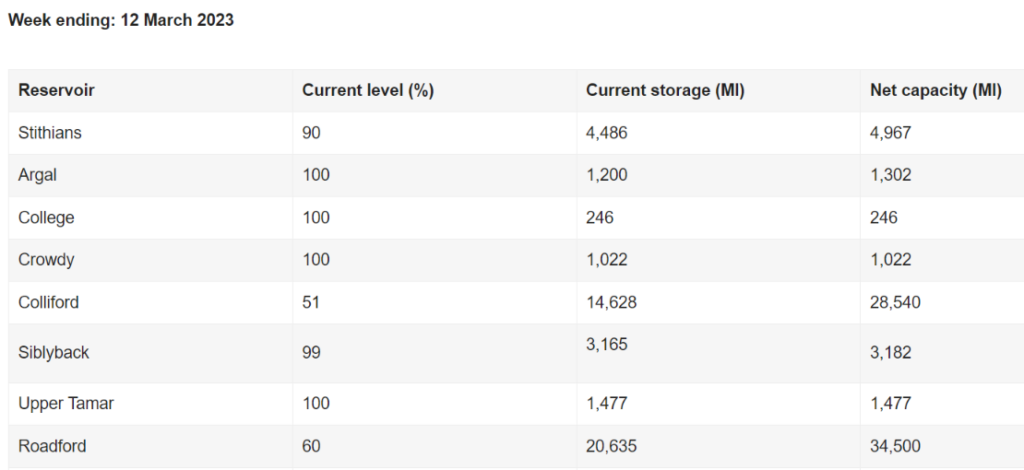
I know it’s the wrong side of the River Tamar, but this time we’ve tagged the water level in Roadford Lake on to the end. Whilst not as bad as Colliford, the largest reservoir in Devon is also struggling to reach the levels South West Water would like to say at this time of year:

The Environment Agency has published its weekly rainfall and river flow summary for the week ending March 14th. Whilst it’s not been great for sewage pollution on the Cornish coast, all things considered it’s just as well that:
It has been a much wetter week across England as a whole compared to the previous week. Rainfall totals ranged from 30mm in east England to 54mm in north-west England. Rainfall totals for the month of March so far range from 52% of the long term average (LTA) in north-east England to 92% of the LTA in central England
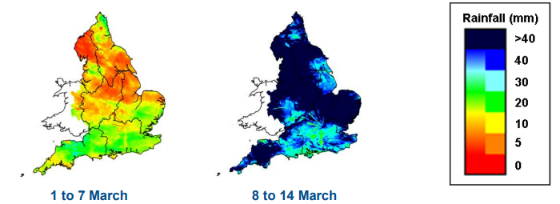

River flows increased at the vast majority of the sites we report on compared with the previous week. 94% of sites are classed as normal or above for the time of year. 19% are classed as normal, 31% are above normal, 21% are notably high and 23% are exceptionally high.
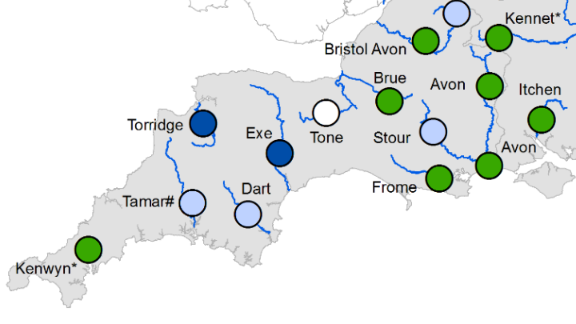
Somewhat belatedly South West Water have released water level data for the largest reservoirs in Cornwall up to Sunday March 19th. The water level in Colliford Lake had reached 53.2 % of total net capacity, a gain of 1.9 % over the week:
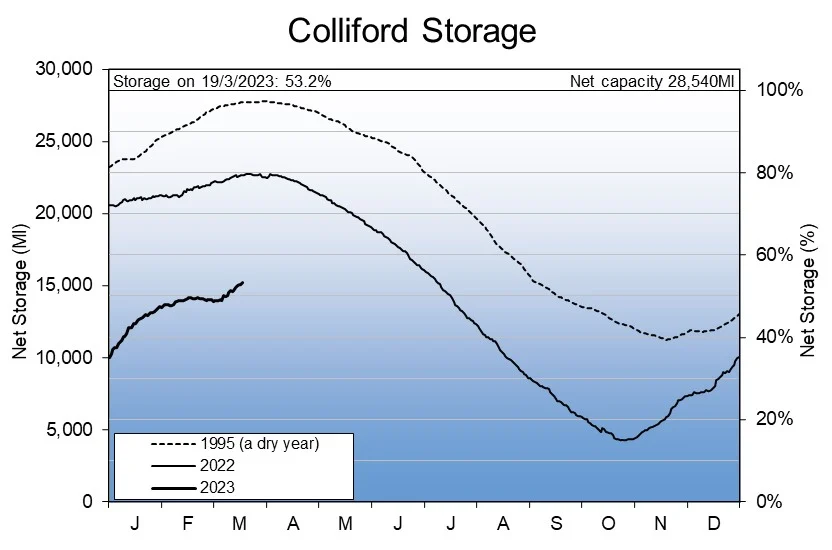
Stithians Reservoir is up to 91.8%:

Over the border, Roadford Reservoir in Devon is up to 61.0%:
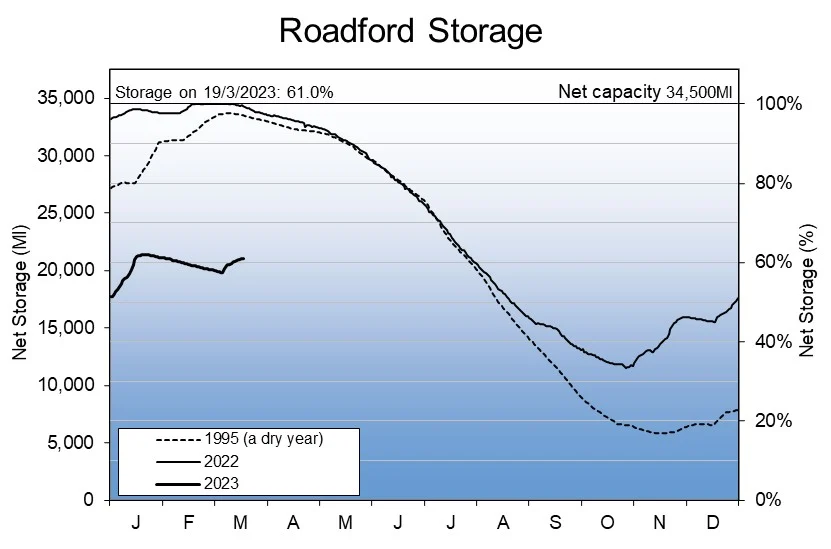
The smaller reservoirs in Cornwall are 100% full:
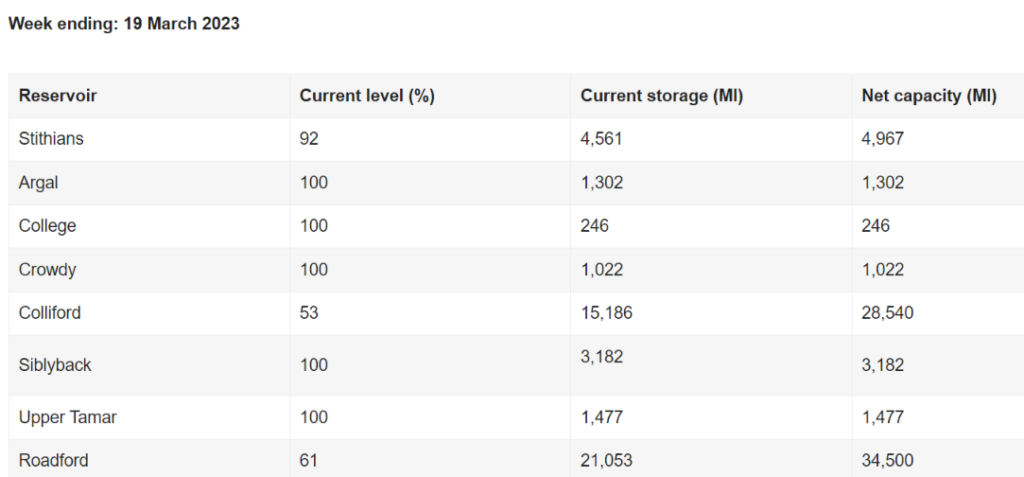
In addition the Environment Agency has published its weekly rainfall and river flow summary for the week ending March 21st:
It has been a moderately wet week across much of England but drier in comparison to the week before. Rainfall totals ranged from 14mm in east England to 46mm in north-west England. Rainfall totals for the month of March so far range from 89% of the long term average (LTA) in north-east England to 126% of the LTA in central England:

The rainfall total was 32mm in south-west England, although the rainfall map suggests that Cornwall received more than the regional average:
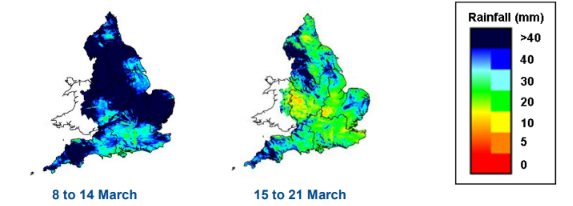
River flows decreased at two thirds of the sites we report on compared with the previous week. Despite this decline in flows, following last week’s wetter weather, 62% of sites are classed as above normal or higher for the time of year. 31% of sites are classed as normal for the time of year. Three sites (5% of all sites) are classed as below normal for the time of year:
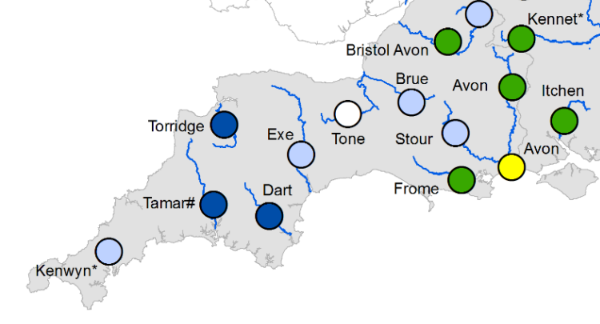
The Environment Agency has published its weekly rainfall and river flow summary for the week ending March 28th:
It has been a wet week across much of the country particularly in southern England. Rainfall totals ranged from 17mm in east England to 43mm in south-west England. Rainfall totals for the month of March so far range from 124% of the long term average (LTA) in north-east England to 158% of the LTA in central England:
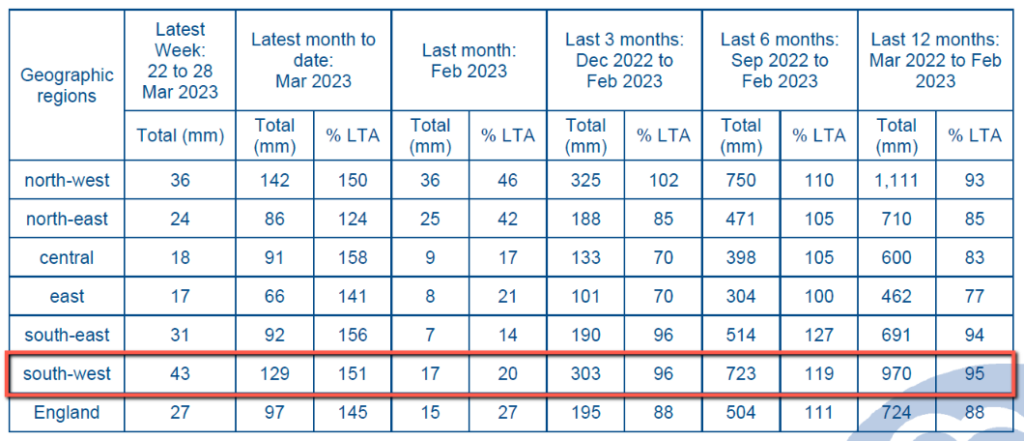
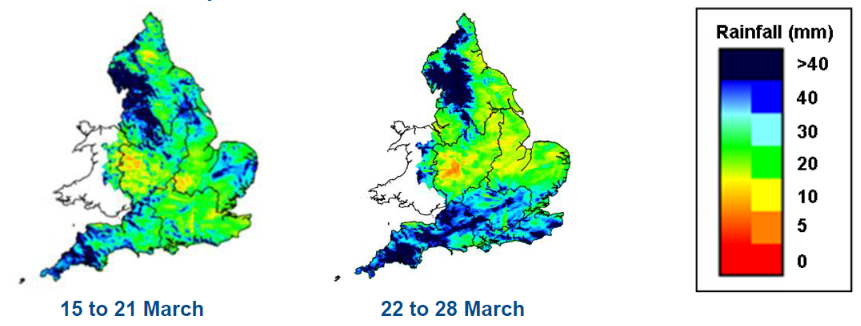
River flows at the two Cornish “indicator sites” are “notably high”:
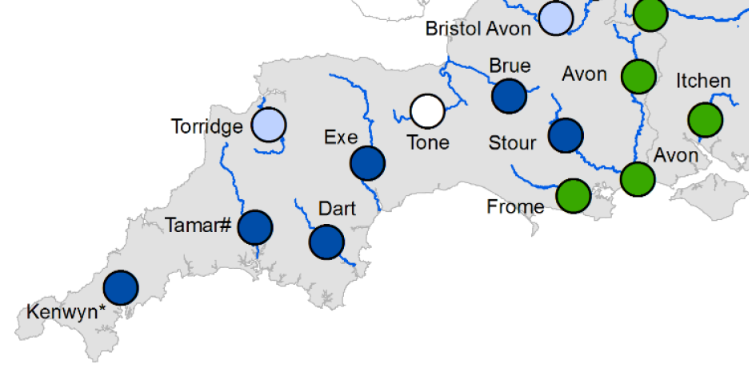
Whilst we await South West Water’s graphical data, here’s the updated table from the South West Lakes Trust:

After missing a week, South West Water have released water level data for the largest reservoirs in Cornwall up to Sunday April 2nd. The recent rain has brought Colliford Lake up to 60% of net capacity by the start of the Easter holiday, the time when historically water levels start to decrease:
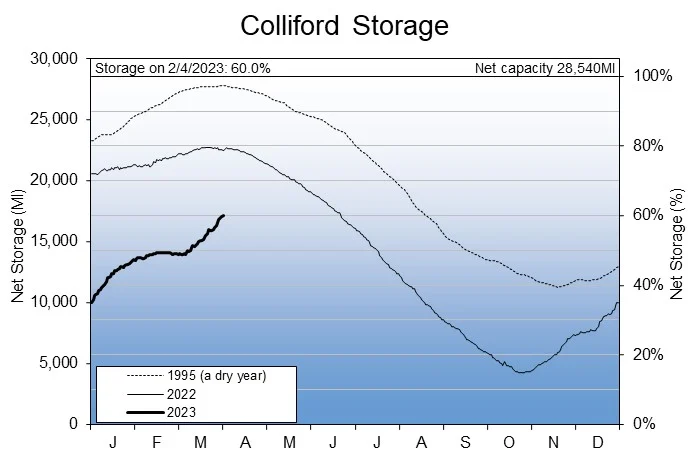
Stithians Reservoir is now almost full to capacity:
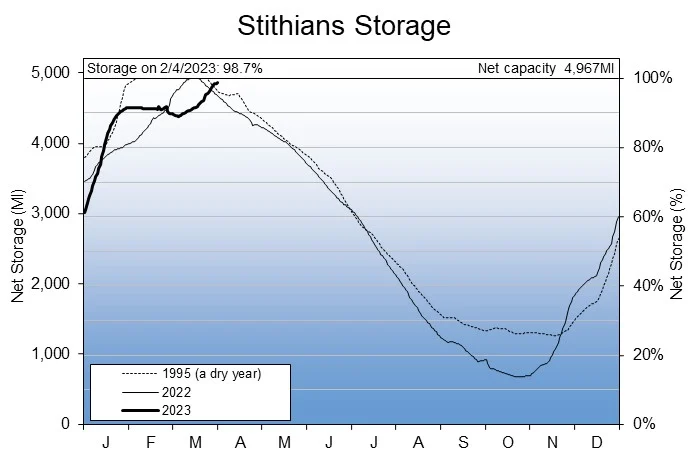
Unfortunately over on the other side of the River Tamar the same cannot be said for Roadford Lake:

The automated rainfall gauge 49104 at Colliford Lake reveals plenty of recent rain on Bodmin Moor:

Consequently Colliford Lake is still refilling and the water level reached 62.3% of total net capacity on Sunday:
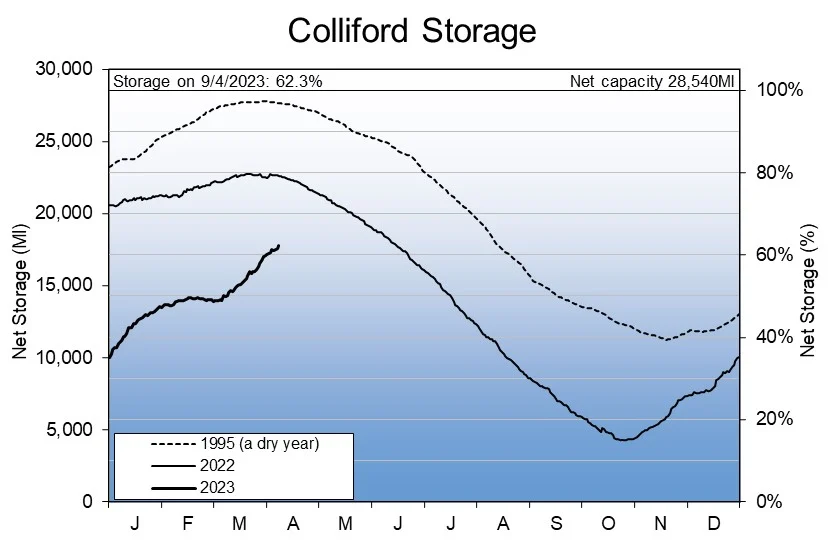
However Roadford Lake in Devon has only increased by 0.3% over the previous week, and the water level is now decreasing:
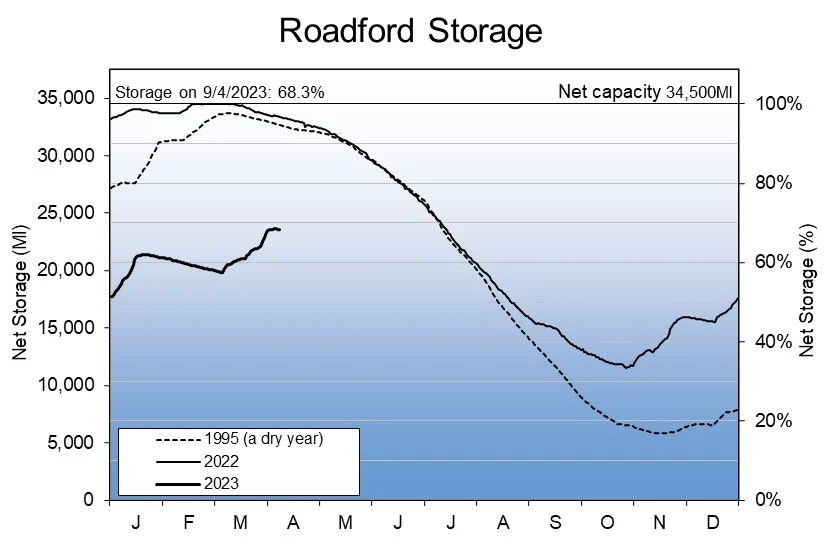
According to the Environment Agency’s weekly rainfall and river flow summary for the week ending April 18th:
It has been another moderately wet week across the country but drier compared to recent weeks. Rainfall totals ranged from 13mm in north-east England to 18mm in south-west England. Rainfall totals for April so far range from 67% of the long term average (LTA) in north-west and central England to 87% of the LTA in south-west England.
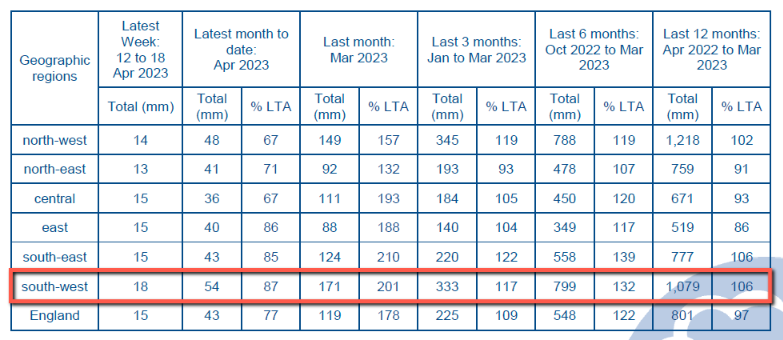
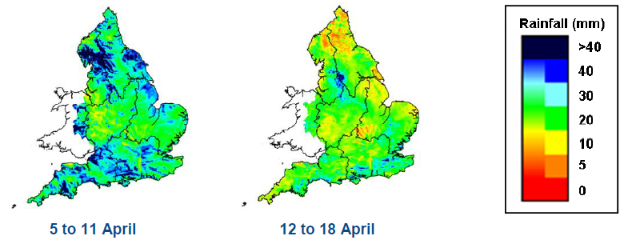
Thanks to the recent rain the water level in Colliford Lake is still increasing:
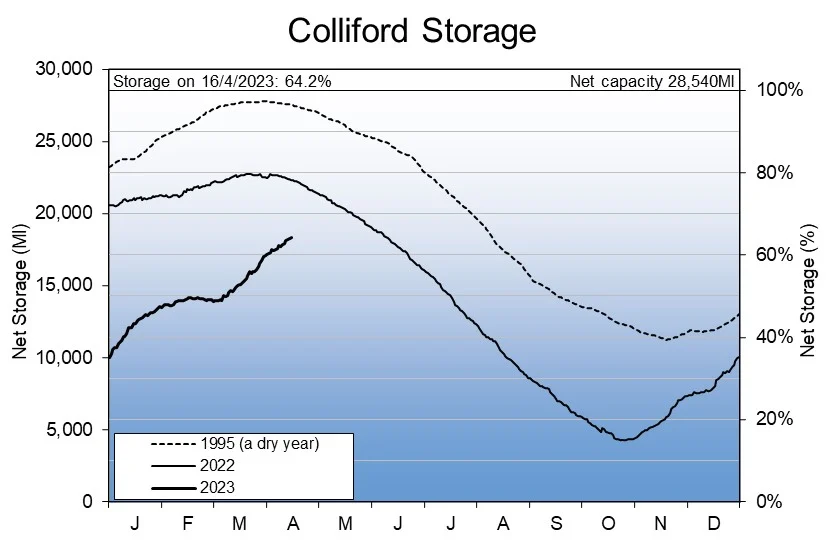
All the smaller reservoirs in Cornwall are 100% full:
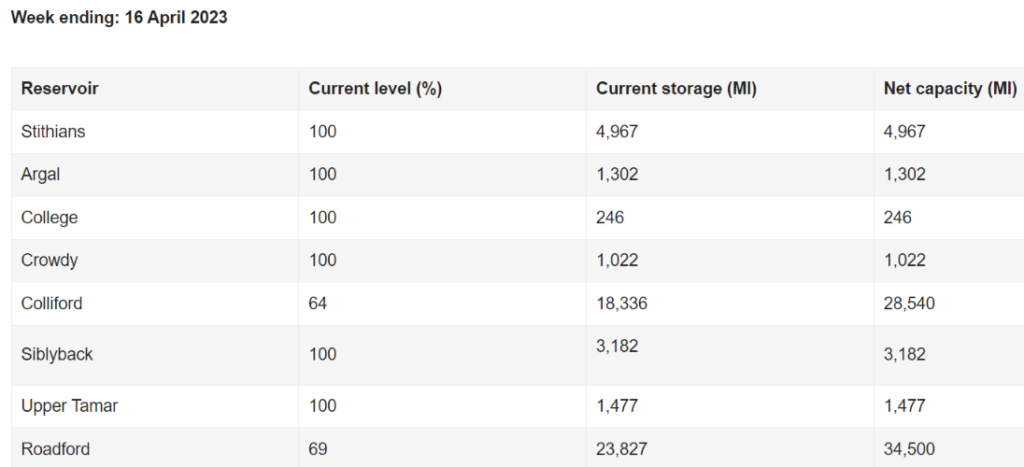
However the same does not apply to Roadford Lake in Devon:
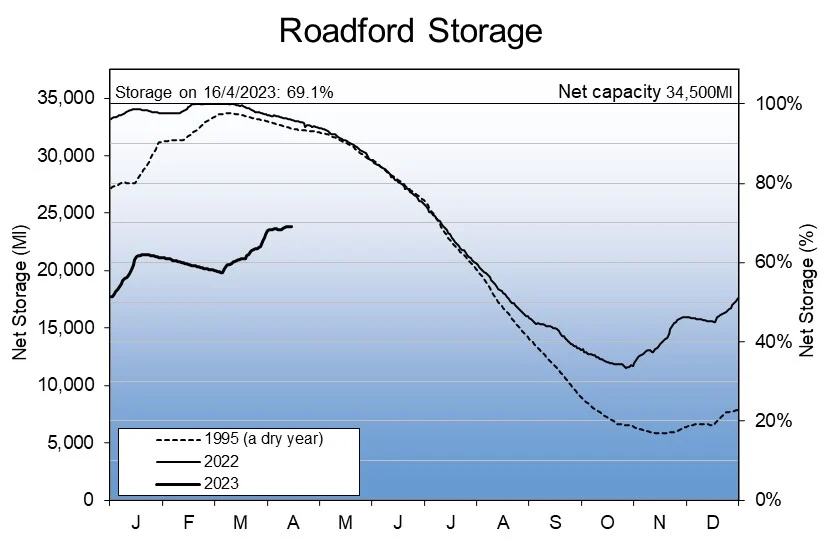
With the water level struggling to get above 70% a temporary use ban for the Roadford Water Resource Zone comes into force on April 25th.
[Edit – April 28th]Here’s the Environment Agency’s weekly rainfall table for the week ending April 25th:
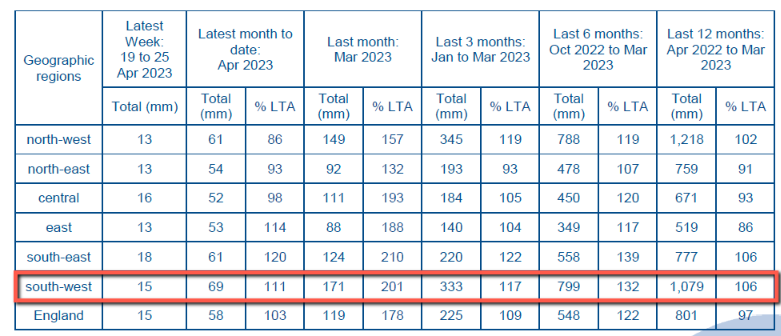
South West Water still haven’t updated their water level graphs, but here’s the South West Lakes Trust’s table:
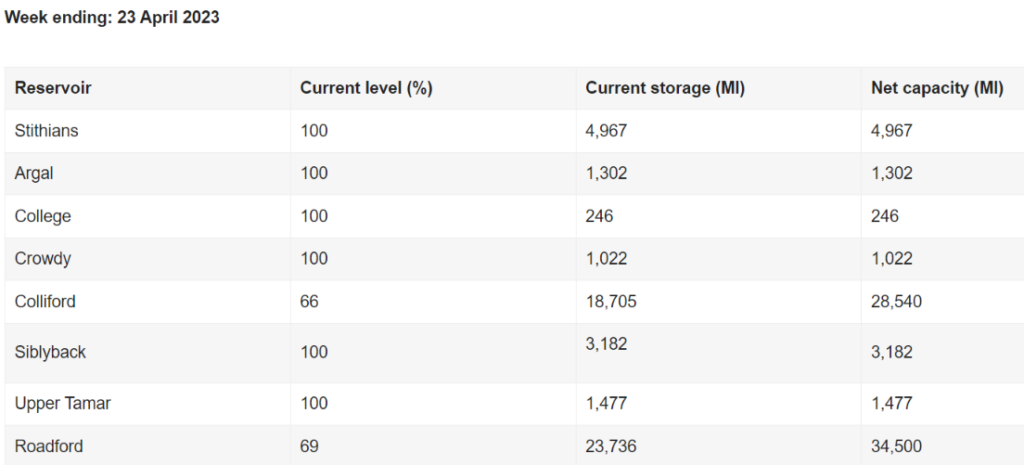
Following the continuing rain the water level in Colliford Lake is still increasing, but Roadford Lake is down slightly on last week.
[Edit – May 4th]According to the Environment Agency’s weekly rainfall and river flow summary for the week ending May 2nd:
It has been a slightly drier week across the country compared to last week. Rainfall totals ranged from 7mm in north-east England to 18mm in south-west England. Rainfall totals for the month of April ranged from 88% of the long term average (LTA) in north-west England to 139% of the LTA in south-east England.
The April rainfall total for South West England was 136% of the long term average:

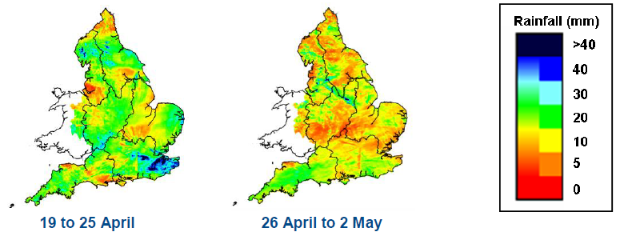
Having missed a week, South West Water have released water level data for the largest reservoirs in Cornwall up to Sunday April 30th. The continuing rain has increased the water level in Colliford Lake, which is now up to 67.2% of total net capacity:
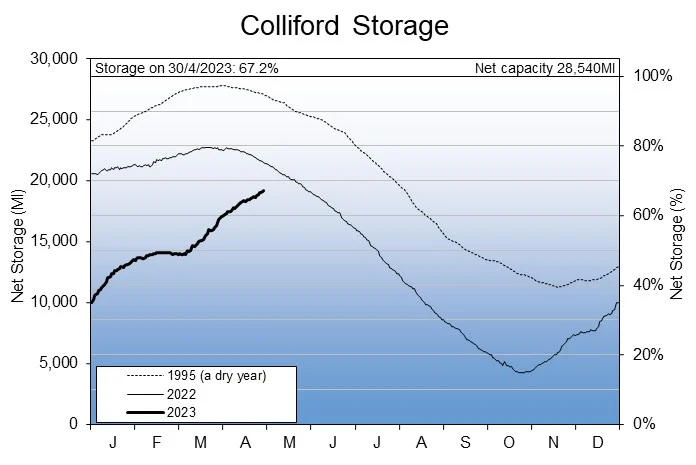
Stithians Reservoir is no longer 100% full:
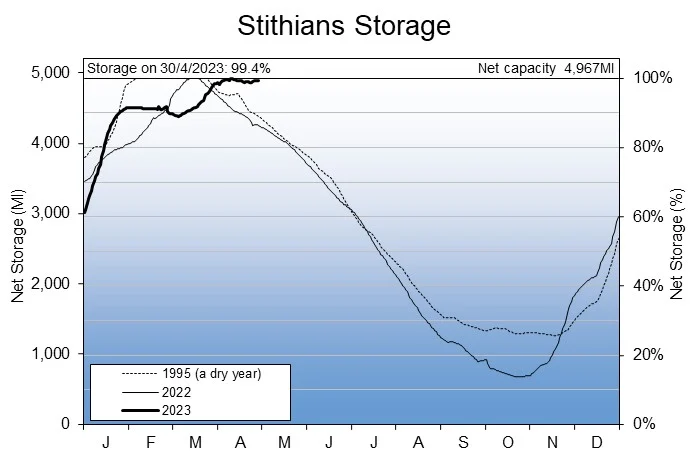
Over on the other side of the River Tamar the water level in Roadford Lake is down to 68.5%:
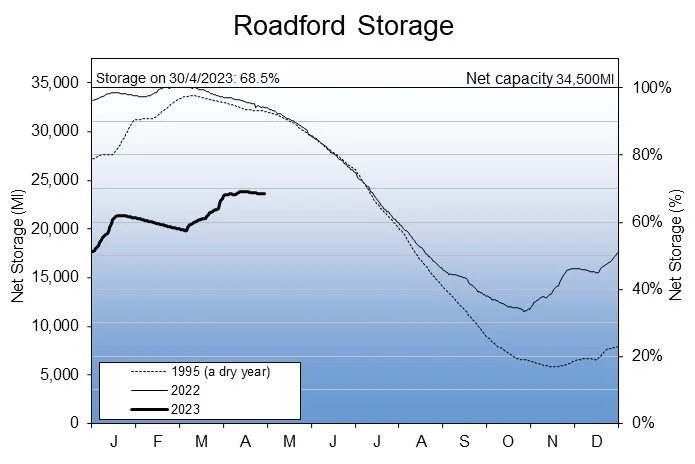
Having missed another week, South West Water have updated their reservoir water level graphs up to May 14th:

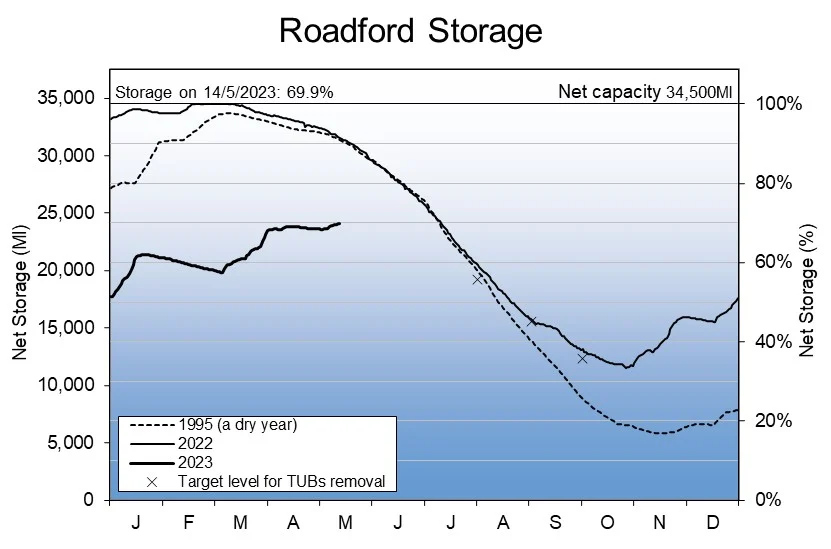
Colliford and Roadford Lakes are both now just under 70% full. As you can see there are also targets on the graphs for when the current “hosepipe bans” will potentially be lifted.
Here too are the water levels of other reservoirs in Cornwall:
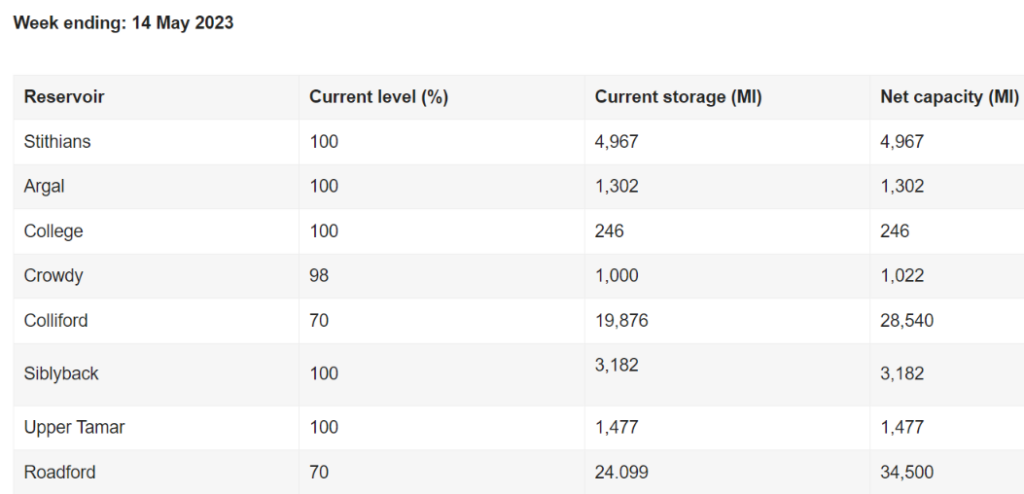
The Environment Agency’s weekly rainfall and river flow summary for the week ending May 16th explains the continuing increase in water levels:
It has been a drier week across the country compared to last week and the driest since the beginning of March. Rainfall totals ranged from 6mm in north-west, south-east and south-west England to 8mm in east England. Rainfall totals for May so far range from 44% of the long term average (LTA) in north-west England to 93% of the LTA in south-west England.
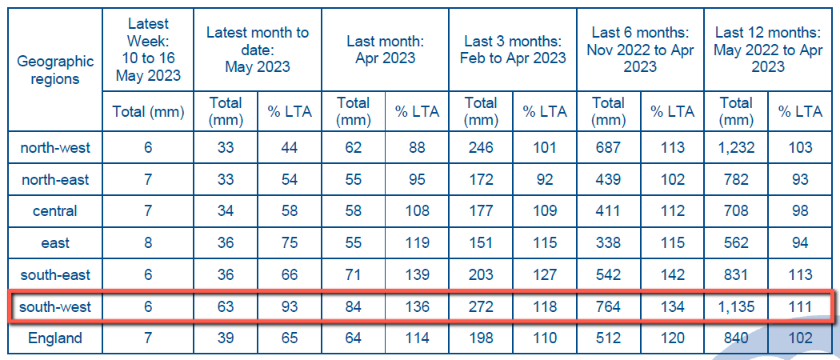
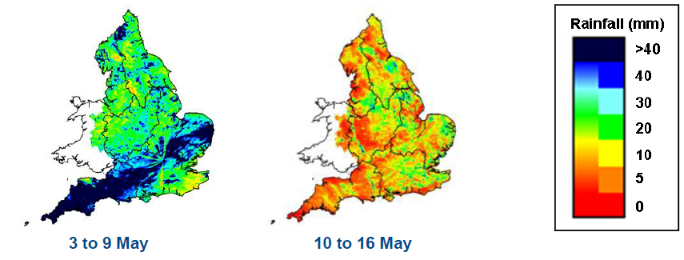
Watch this space!

Now that the heavier rainfall in January has disappeared from the left hand side of the Colliford rainfall chart, here’s how it looks today:
Yesterday’s edition of the Guardian reported on the impending drought from further afield:
South West Water have applied to the Environment Agency for a drought permit “to make temporary arrangements to abstract water from the River Lyd”. This is an extension to the existing “winter permit” which expired on March 31st.
South West Water have announced a new “hosepipe ban” for parts of Devon:
According to South West Water’s “hosepipe ban” page: